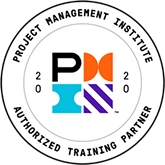Model and Document Your Project Requirements
- Traditional Classroom: 3-day
- Virtual Instructor-led: Six 3-hour sessions
Model and Document Your Project Requirements discusses the core functions of the business analyst in the context of defining and communicating product requirements and introduces a variety of modeling and documentation techniques that can be applied in real-world business situations. The course is intended to serve several audiences and meet a variety of needs. The material in the course is directed at both the novice looking to enter the field and the self-taught veteran looking to fill gaps in his or her skills or knowledge.
The course is aligned with International Institute of Business Analysis (IIBA®) Business Analysis Body of Knowledge® (BABOK® Guide) and provides a high-level overview of all the BABOK® Guide knowledge areas. It then further explores the tasks and techniques of the Requirements Analysis and Design Definition area in depth.
The course is part of a curriculum offered by Corporate Education Group (CEG). It is one of four courses that form the core of the curriculum. CEG offers a certificate upon successful completion of these four courses. Additional electives are offered for the business analyst who is seeking advanced training. This course assumes that the participant has already completed Core Competencies for the Business Analyst.
In keeping with the philosophy of CEG, experienced business analysts teach this course, and much of the class time is devoted to exercises in which participants can practice the skills being taught. Job aids introduced in the course can be used by participants when they return to the workplace to help them apply their new skills in the performance of job tasks.
Target Audience
Individuals who will benefit from this course include:
- Entry-level business analysts and their managers
- Self-taught business analysts requiring a course that fills in skills gaps
- Systems analysts and programmers interested in expanding their roles
- Quality assurance professionals
- Project managers
Learning Objectives
- Describe the purpose of the Requirements Analysis and Design Definition knowledge area.
- Describe the core functions of the business analyst during Requirements Analysis and Design Definition.
- Describe the range of UML® and other modeling techniques.
- Build a context diagram.
- Draw a use case diagram.
- Write a use case description.
- Create an activity diagram.
- Create a storyboard.
- Select an appropriate prototyping technique based on intended usage.
- Create an entity relationship diagram and supporting data dictionary.
- Identify class model components.
- Model a set of business rules for an organization using either a decision table or a decision tree.
- Identify and prioritize non-functional requirements.
Course Outline
Module 1: Overview of Requirements Analysis and Design Definition
- Requirements Analysis and Design Definition Knowledge Area
- Discussion: Requirements Analysis Challenges
- Requirements Classification Scheme
- Analytical Approaches
- Overview of UML®
- Selecting Modeling Techniques
- Requirements Documents and Requirements Types
- Exercise: Paper Airplane
Module 2: Context Diagrams
- Components
- Perspective
- Overview of Sample Case: Foley Automotive Case Study
- Foley Business Context Diagram
- Foley System Context Diagram
- Exercise: Build a Context Diagram
Module 3: Use Case Diagrams
- Purpose
- Actors
- Associations
- Demonstration: Foley Automotive Use Case Diagram
- Exercise: Develop a Use Case Diagram
Module 4: Use Case Descriptions
- Purpose
- Preconditions
- Scenarios
- Flow of Events
- Main
- Alternate
- Exception
- Post-Conditions
- Discussion: Identify Scenarios
- Use Case Briefs
- Exercise: Develop a Use Case Description
- Discussion: Identify Alternate or Exception Flows
- Two-Column Format
- Commonality
- Generalization
- Include and Extend Relationships
- Discussion: Identify Commonality Among Use Cases
Module 5: Workflow Models
- Purpose
- Discussion: Workflow Modeling Experience
- Decomposing a Process (Foley Automotive Business Process)
- Workflow Modeling Notations
Module 6: Activity Diagrams
- Purpose
- Activity Diagram Notation
- Foley Automotive Activity Diagram
- Activity Diagramming Approach
- Discussion: Identify Trigger Events
- Discussion: Determine the Perspective
- Discussion: Set the Boundaries
- Discussion: Identify Activities
- Exercise: Create an Activity Diagram
Module 7: User Interface Requirements: Usability
- Users versus Actors
- Discussion: User Profiles
- Personas
- Exercise: Develop Personas
- Discussion: Usability Requirements with Measurable Targets
Module 8: User Interface Requirements: Navigation and Information
- Modeling the User Interface
- Storyboarding
- Dialog Maps
- Prototypes
- Discussion: Iterative Refinements
- Exercise: Create a Storyboard
- Exercise: Choose a Prototyping Method
- User Interface Requirements Matrix
- Exercise: Identify Information Requirements
Module 9: Data Modeling
- Data Modeling
- Entity Relationship Diagram
- Discussion: Entities and Cardinality
- Data Dictionary
- Levels of Abstraction
- Exercise: Develop an Entity Relationship Diagram and a Data Dictionary
Module 10: Class Models
- Class Model Notation
- Classes, Objects, and Attributes
- Class Modeling Process
- Foley Automotive Class Diagram
- CRUD Operations
- Exercise: Identify Operations Within Classes
- Multiplicity
- Exercise: Read Multiplicity Relationships
- Comparison of Class Models and Data Models
Module 11: Business Rules
- Business Rules versus Requirements
- Sources of Business Rules
- Rules Repository
- Classifying Business Rules
- Discussion: Terms and Facts
- Decision Tables
- Exercise: Draw a Decision Table
- Decision Trees
Module 12: Non-Functional Requirements
- Types of Non-Functional Requirements
- Availability
- Performance
- Security
- Reliability
- Maintainability
- Scalability
- Interoperability
- Discussion: Identify Non-Functional Requirements
- Conflicting Requirements
- Factors Influencing Tradeoffs
- Exercise: Identify and Prioritize Non-Functional Requirements
- Exercise: Determine the Appropriate Analysis Technique for a Project
BAV312 Course Code
For more information on this topic, as well as how Corporate Education Group can help power your organization’s performance, contact us via email or call 1.800.288.7246 (US only) or +1.978.649.8200. You can also use our Information Request Form!






